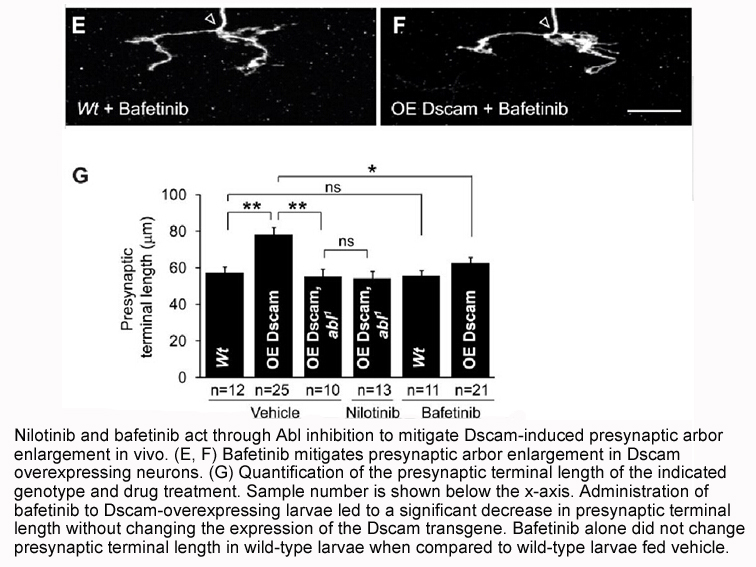Archives
The crucial role of AP in
The crucial role of AP-1 in establishing and maintaining cell type-specific gene expression programs and cell identity is further apparent during reprogramming of mouse embryo fibroblasts (MEFs) into iPSCs with either Oct4/Sox2/Klf4/cMyc (OSKM ) factors , or chemicals . Using ATAC-seq to profile chromatin accessibility dynamics during reprogramming, it was observed that the accessibility of fibroblast-specific enhancers bound by AP-1 and other somatic factors decreased during reprogramming while the accessibility of OSKM-bound enhancers increased. Moreover, mln4924 that failed to reprogram maintained the MEF chromatin state , while overexpression of c-Jun led to failure of closing of some fibroblast-specific enhancers . The importance of losing fibroblast-specific enhancers was also highlighted by perturbation experiments showing that knockdown of AP-1 expression increased reprogramming efficiency , while overexpression of AP-1 and other somatic TFs decreased reprogramming efficiency . Thus, high AP-1 expression maintains fibroblast cell identity and its decline is essential for reprogrammed fibroblasts to assume stem cell identity.
Transient enhancers also became accessible during reprogramming but lost their accessibility before pluripotency was achieved. In OSKM studies these transient enhancers were enriched in AP-1 motifs and OSKM motifs, suggesting that, in the early stages of reprogramming when both endogenous AP-1 and exogenous Oct4 and Sox2 are highly expressed, these factors are able to act as pioneer factors and cooperatively activate novel enhancers in places where the binding motifs of these TFs are not strong enough to outcompete nucleosomes on their own . Transient enhancers were also observed during chemical induction of pluripotency, but instead of being occupied by AP-1 they were enriched for motifs of TFs belonging to the GATA and FOX families . This discrepancy could be explained by differences in gene expression and chromatin dynamics, as endogenous Oct4 and Sox2 were upregulated long after AP-1 transcripts had disappeared making it impossible for them to cooperatively bind to DNA during chemical induction of pluripotency. The functional role of transient AP-1-bound enhancers during reprogramming remains elusive. During chemical induction of pluripotency, reprogramming can clearly be achieved without the activation of these enhancers. Perhaps the simplest model, also alluded to by Knaupp . , is that redistribution of AP-1 and other somatic TFs to transient regions may play a role in the extinction of the somatic transcriptional network by recruiting those factors away from the regulatory elements required to maintain MEF identity.
Taking these findings together, a hypothesis for the role of AP-1 in chromatin accessibility in different contexts should consider both the combinatorial activit y of its constituents, widely expressed in multiple tissues and cell types, as well as other cell-specific TFs and cell-specific TFs (). While there is evidence to consider OSK as pioneer factors , only one of these studies proposed, but did not demonstrate, that AP-1 could act as a pioneer factor , despite the precedent of AP-1 activation by glucocorticoid receptor (GR) binding increasing chromatin accessibility in a mouse mammary epithelial cell line . This might be because, at least in iPSC reprogramming, AP-1 is primarily associated with fibroblast-specific enhancer elements that are closed early during reprogramming. In addition, post-translational modifications, such as phosphorylation, may alter combinatorial binding and confer specificity to members of AP-1. Future applications of single-cell ATAC-seq (scATAC-seq) coupled with novel computational approaches are necessary to investigate AP-1 cooperativity with other factors during development or reprogramming to pluripotency.
Insights on enhancer reconfiguration will help us to better understand disease at a cellular level. A single factor can promote an increase in genome-wide chromatin accessibility during metastatic progression in a mouse model of human small cell lung cancer . AP-1 and PEA3 subfamily ETS TFs (simultaneously or in isolation) were found to be involved in the open chromatin of esophageal adenocarcinoma . Finally, AP-1 motif enrichment ranked first in enhancer regions with increased H3K27ac in a mouse model of pancreatic ductal adenocarcinoma, in which metastatic transition driven by enhancer reprogramming is associated with an embryonic foregut endoderm-like transcriptional state . Thus, chromatin dynamics-based studies for AP-1 could be important when investigating cancer progression and the evolution of metastatic properties.
y of its constituents, widely expressed in multiple tissues and cell types, as well as other cell-specific TFs and cell-specific TFs (). While there is evidence to consider OSK as pioneer factors , only one of these studies proposed, but did not demonstrate, that AP-1 could act as a pioneer factor , despite the precedent of AP-1 activation by glucocorticoid receptor (GR) binding increasing chromatin accessibility in a mouse mammary epithelial cell line . This might be because, at least in iPSC reprogramming, AP-1 is primarily associated with fibroblast-specific enhancer elements that are closed early during reprogramming. In addition, post-translational modifications, such as phosphorylation, may alter combinatorial binding and confer specificity to members of AP-1. Future applications of single-cell ATAC-seq (scATAC-seq) coupled with novel computational approaches are necessary to investigate AP-1 cooperativity with other factors during development or reprogramming to pluripotency.
Insights on enhancer reconfiguration will help us to better understand disease at a cellular level. A single factor can promote an increase in genome-wide chromatin accessibility during metastatic progression in a mouse model of human small cell lung cancer . AP-1 and PEA3 subfamily ETS TFs (simultaneously or in isolation) were found to be involved in the open chromatin of esophageal adenocarcinoma . Finally, AP-1 motif enrichment ranked first in enhancer regions with increased H3K27ac in a mouse model of pancreatic ductal adenocarcinoma, in which metastatic transition driven by enhancer reprogramming is associated with an embryonic foregut endoderm-like transcriptional state . Thus, chromatin dynamics-based studies for AP-1 could be important when investigating cancer progression and the evolution of metastatic properties.